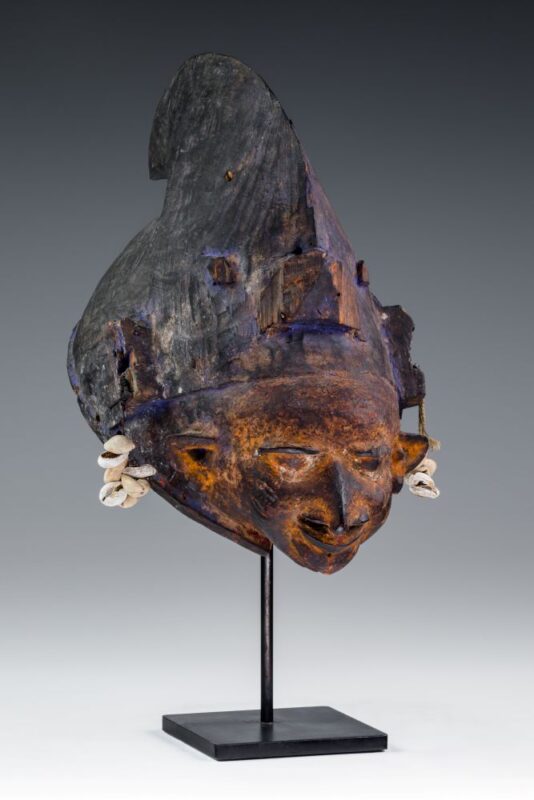Object Title: Gelede Mask
Materials: Wood, pigment, shells
Country: Nigeria
Culture: Yoruba
Date Created: Late 19th Century to 20th Century
Gelede masks were used among the Southwestern Yoruba during festivals to appease the Mother Goddess, Iyala, (considered in some contexts to be the mother of all other Yoruba deities), and to honor and placate the feminine principal. The Gelede dances, held over a several day period, honor the great mother and the mothers of society, by masquerade dancing and feasting.
In Yoruba thought, women, particularly older women, are the source of tremendous power that can be used positively for the benefit of all of society, or if subverted, even unconsciously, can be the root of witchcraft. Masks of the Gelede society may be simple or extremely complex and are usually danced in pairs by male dancers. The costume further adds fake breast and an often-pregnant belly, along with skirts that move in an erotic manner when the dancer shakes his hips.
The masks are also didactic and aphoristic; some masks have complex superstructures that identify them as specific “types” – the “cheating wife,” the “hard working woman,” others have zoomorphic attributes that refer to positive or negative associations that these animals have in Yoruba culture. This mask is fairly simple as far as superstructure and would likely have represented the “beautiful woman” archetype.
The Ross mask shows extreme age and it is likely that the piece is from the very early part of the 20th century, if not the end of the 19th century.
Exhibition History:
In Memoriam – Bonnie Terrill Ross (1956-2022). New York: QCC Art Gallery of CUNY, October 12, 2023, to February 16, 2024.


